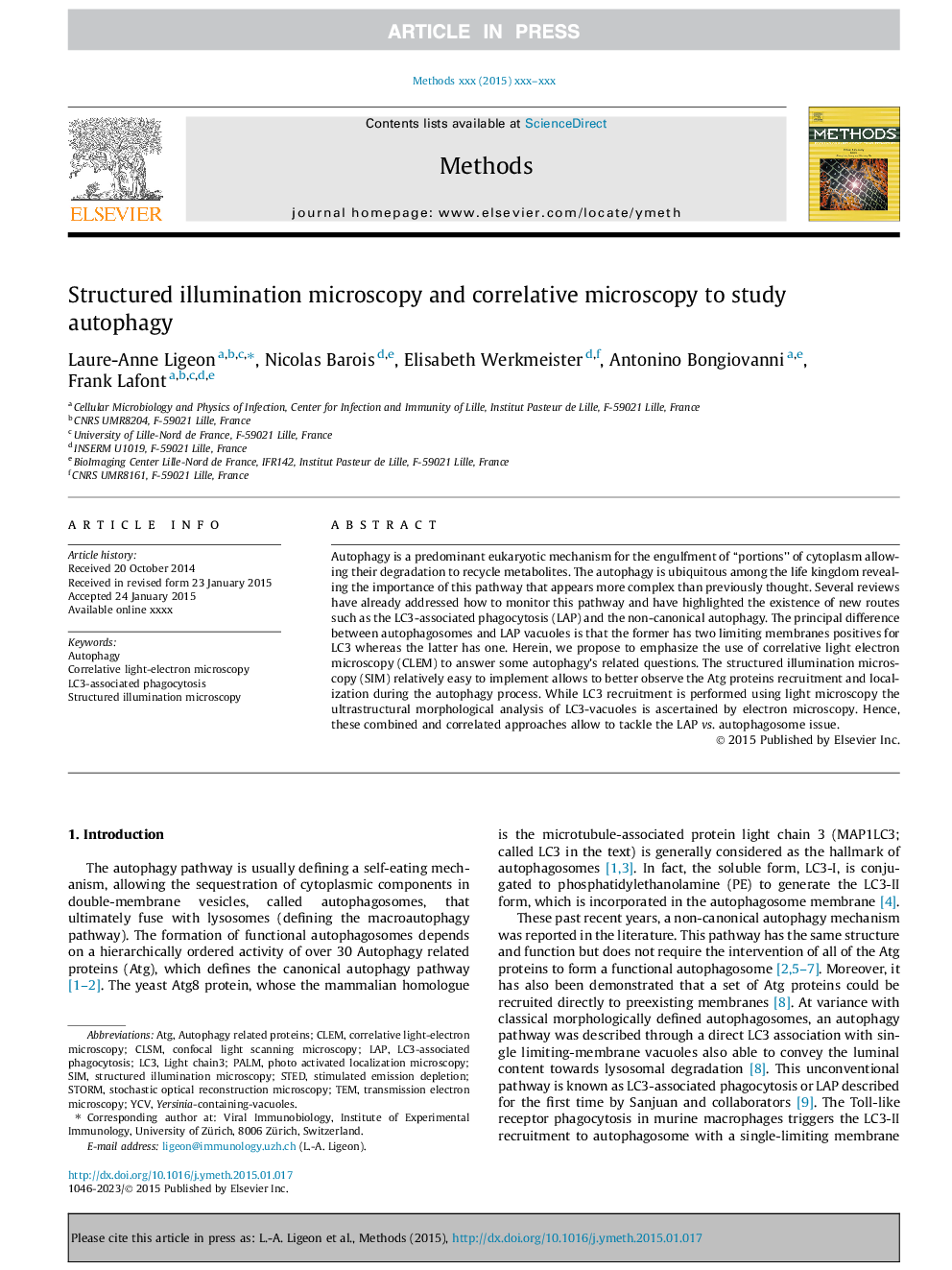| Article ID | Journal | Published Year | Pages | File Type |
|---|---|---|---|---|
| 8340670 | Methods | 2015 | 8 Pages |
Abstract
Autophagy is a predominant eukaryotic mechanism for the engulfment of “portions” of cytoplasm allowing their degradation to recycle metabolites. The autophagy is ubiquitous among the life kingdom revealing the importance of this pathway that appears more complex than previously thought. Several reviews have already addressed how to monitor this pathway and have highlighted the existence of new routes such as the LC3-associated phagocytosis (LAP) and the non-canonical autophagy. The principal difference between autophagosomes and LAP vacuoles is that the former has two limiting membranes positives for LC3 whereas the latter has one. Herein, we propose to emphasize the use of correlative light electron microscopy (CLEM) to answer some autophagy's related questions. The structured illumination microscopy (SIM) relatively easy to implement allows to better observe the Atg proteins recruitment and localization during the autophagy process. While LC3 recruitment is performed using light microscopy the ultrastructural morphological analysis of LC3-vacuoles is ascertained by electron microscopy. Hence, these combined and correlated approaches allow to tackle the LAP vs. autophagosome issue.
Keywords
Related Topics
Life Sciences
Biochemistry, Genetics and Molecular Biology
Biochemistry
Authors
Laure-Anne Ligeon, Nicolas Barois, Elisabeth Werkmeister, Antonino Bongiovanni, Frank Lafont,
